ScuzzBlog: Diaries February 2020
Entry 12th February 2020: Post 02: Why I chose Amstrad in 1987.
Why I chose Amstrad in 1987.
May seem a bit odd for me to choose an Amstrad PCW9512 over any
number of other computers of the day but there was good reason.
I come from a large family and we generally were tech nutters
with interests in film, music and later computers. My sister worked
for a large computer firm selling systems around the world. Dad had
not one but two A500s and was always going on about how brilliant
they were.
For me I started with a ZX-81 though had had ambition of buying a
VIC-20 when they came out and was so close to buying one, but sadly
spent all my hard saved cash on this woman that eventually would
become my wife.
Moving on from the ZX-81 I purchased a 16K Spectrum which was
exchanged for a 48K Spectrum. I did like my Spectrum but found it
a little basic when it came to serious stuff. I dabbled a while
with a +2 but soon realised what I wanted was a monitor. I was
starting to develop my own business as an architect and needed
something that could do all my paperwork. I also wanted to
continue my interest in BASIC.
It is easy to forget the significance of home entertainment
centres and video in the late eighties. For me I spent a lot of
time hooked into my video and music editing and also created
animations with real paper and SONY video camera. The idea of
transferring operations to a computer was pretty dumb given that
I had the kit to make, edit and enjoy my video productions
without the use of a computer. I could also draw, paint, colour
and animate using pen, pencil, brush and paper way way quicker
than any computer in 1986. I had seen what computers were capable
of and trust me it looked like a very crude process compared
to life on my A1 drawing board in my studio.
And so when I asked my sister what system to buy for my business
she advised on the PCW9512. Not only did it come complete with
an ace word processing package but had as part of the deal a
printer and monitor. I also got LOGO, CP/M and Mallard BASIC.
I made a conscious decision not to get a games machine. I would
have liked colour which I enjoyed later with the Amstrad 1512.
Sinclair had been bought out by Alan Sugar and now was part of
the Amstrad Group. In hindsight, which is a great thing, I should
have bought a CPC464 and then moved onto the 6128 and I kick
myself for not doing so. At that time we used Intergraph and MACs
at work and seriously I hated both. I love my home world and PCs
and Macs have work overtones that just make me shiver.
And so I bought the Amstrad PCW9512 which became my main machine
from 1987 all the way to 1993. She is responsible for so many
books that I have written. First and foremost though she helped
me through a very difficult time and partnered me while I worked
through the recession of 1992 which climaxed in the UK leaving
the European Monetary Union. [ nothing changes ].
She did break before I stopped using her. The armature on the
printer was always breaking, but the drive fell over. I have since
repaired the 9512 and she works to this day. Data is so important
to me and with the 3" drive and unique double sided read on the
9512 nothing else will let me use the discs.
Do I regret buying the 9512... definitely not. Would the Amiga
have been a better choice. Maybe.. but I never wanted one so I
never compared. The 9512 did what I asked of her and I did
love writing my books. This was a dedicated word processing machine...
and that is what I bought her for. When not on the computer I was
on my home entertainment kit and mixing and editing video. Computers
hadn't got there yet. That came later.
Spec:
PCW9512 made by Amstrad United Kingdom 1987
Using a Zilog Z80A CPU running at 4MHz
RAM was 512K and had no ROM chips.
The machine loads via Bootsrap loader.
The drive is a 3" Hitachi 720K
The disc reads both sides without turning over.
The OS is CP/M+ using Mallard BASIC and Locoscript for word processing.
Separate custom microprocessors are used to control printer and keyboard.
Black and white monitor 90 columns and 32 lines of text.
Whilst there is one drive it has the option for second.
Full size PC style keyboard with 82 keys. Special Amstrad function keys.
Parallel Centronics printer port.
Expansion for the Amstrad CPS8256 Parallel/Serial interface.
Integrated daisy-wheel bi-directional printer at 20CPS.
Automatic paper loading by bar rail action.
Complete with LocoScript 2, LocoMail, LocoSpell 7800 word dictionary.
CP/M Plus with Mallard BASIC, GSX and DrLogo.
CP/M utilises Amstrads own RPED text editor.
Plus very large user manuals.
And all for just £499.
Only problem is the armature or hammer on the daisy wheel printer
which developed hair line fractures. You also need to have pretty
forgiving neighbours as the noise from the printer is very loud.
The machine will not read the 8256 discs as they need to be turned
over to read the other side. Also the discs are unreadable on an
Amstrad 6128.
The computer operates very much from shortcut keys set from the
keyboard and so whilst the keyboard is a PC style it has special
significance to the operation of all the functions of the machine.
When switched on the drive will be accessed and a series of black
horizontal lines will show on the screen indicating the boot process.
Without the disc or a failed disc the machine will halt and then
give out a high pitched noise. Whilst the machine is on the discs
can be swapped out as long as the computer is told of the change.
There is no auto detection of discs.
The discs are the 3" compact and not 3.5" floppies.
Why I chose Amstrad in 1987.
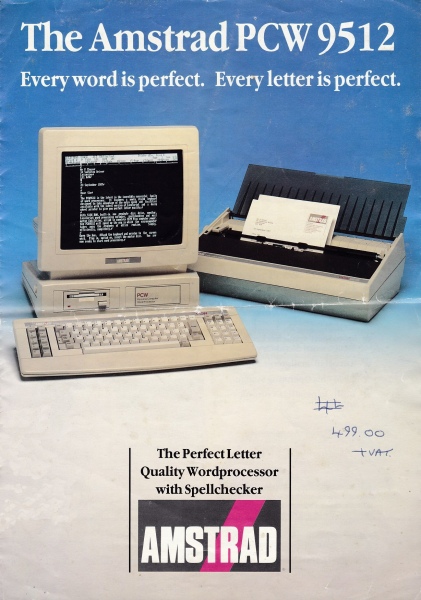
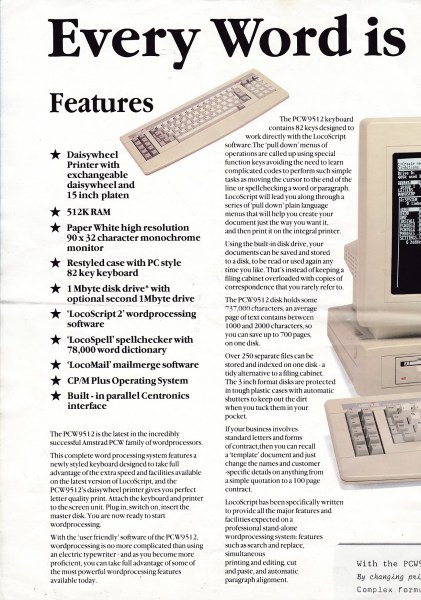
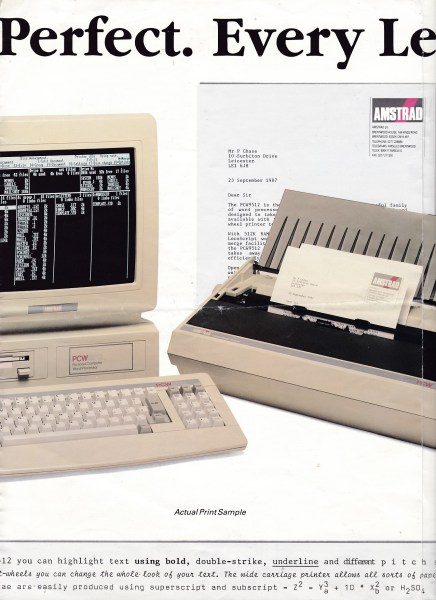
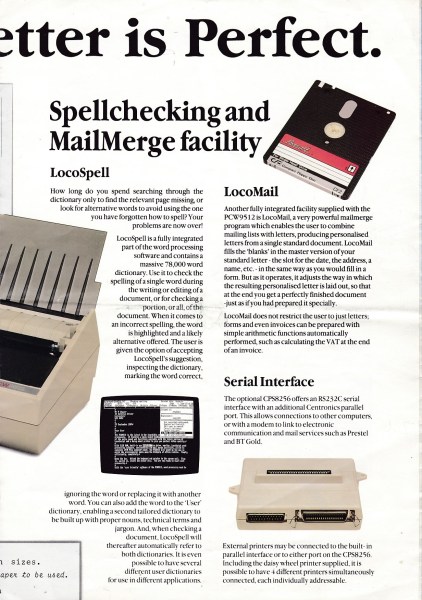
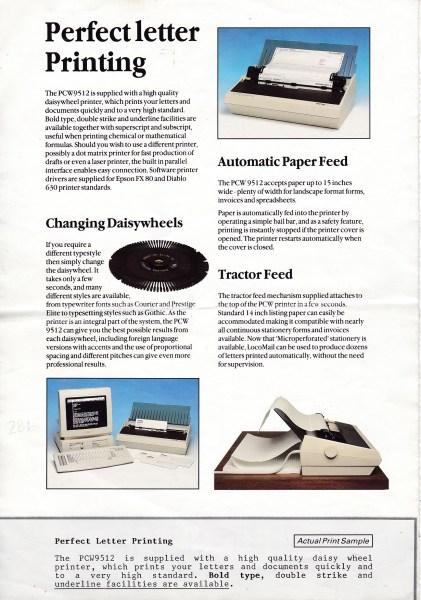
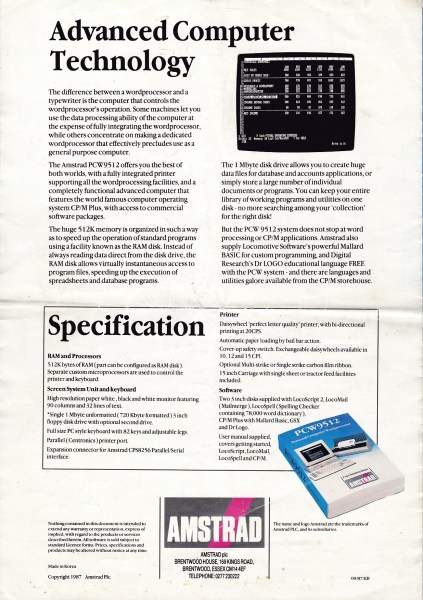
|

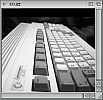
![]()


![]()